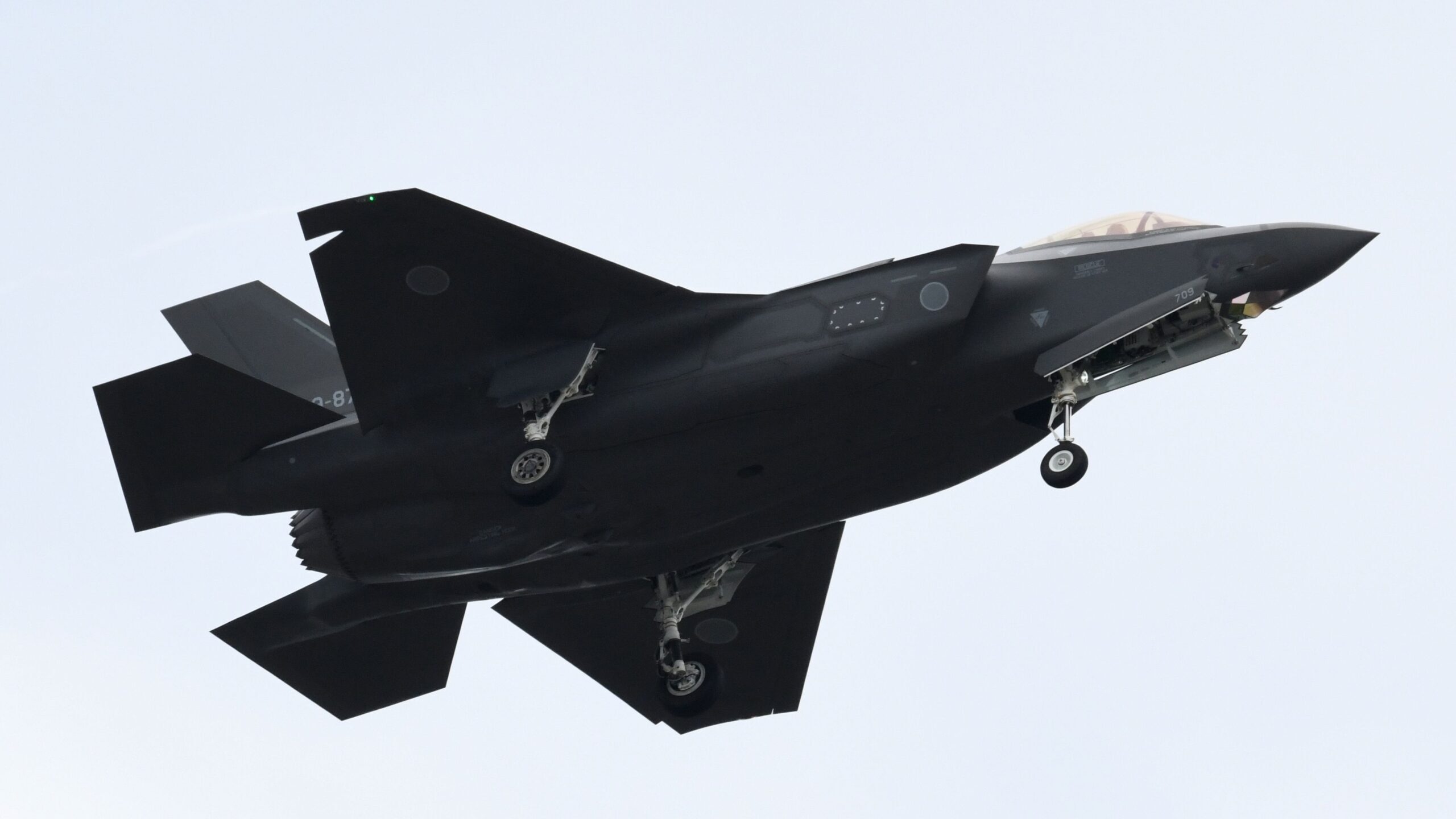
An F-35 fighter aircraft of the Japan Air Self-Defense Force takes part in a military review at the Ground Self-Defence Force’s Asaka training ground in Asaka, Saitama prefecture on October 14, 2018. (Photo credit KAZUHIRO NOGI/AFP via Getty Images)
SYDNEY — Japan has flown two F-35s and moved 55 people to Australia for the country’s first foreign foray by their Joint Strike Fighters.
The Japanese air force team arrived at RAAF Base Tindal on the north coast of Australia on Saturday and will be staying until Tuesday after making the 6,400-kilometer (4,000-mile) trip to what is known here as Australia’s “top end.” Post-war Japan has never engaged in expeditionary air operations before, except with the United States. Japanese pilots traditionally operated from and to Japan.
“My take on this is that it reinforces the closer ties between the ADF (Australian Defense Force) and Japanese self defence forces, with the opportunity for common capability (i.e. the F-35A) as a means to strengthen the defence cooperation relationship,” Malcolm Davis, a defense expert at the Australian Strategic Policy Institute, said in an email. “That’s the key message here — Tokyo and Canberra have common concerns — i.e. ‘China’ — and both are working together to train and collaborate on deterrence strategies.”
Davis noted the importance of expeditionary air operations as well. “It also helps the JASDF to train for expeditionary air deployments, and the RAAF to work with foreign allied air forces using common platforms, but also to experience how JASDF might support the F-35A in their own way.”
In an August 14 release, the Japanese Air Self Defense Force had said that the Japanese contingent would be larger, including four F-35As, one KC-767, one C-130 and one C-2, with roughly 160 personnel. It’s unclear what changed between the Australian press statements out today and the JASDF release.
In a rare public comment in today’s press release, the civilian head of the Australian Defense Department called the Japanese visit “a significant milestone in the relationship between our two countries, and is the first activity to be held under the Reciprocal Access Agreement.”
Greg Moriarty was referring to an agreement that only came into force on August 12. It was signed by the two governments in January last year, and the F-35s’ arrival was its first manifestation. The fact that both countries moved that quickly on a brand new agreement is an indicator of how committed the two sides are to tightening their burgeoning military and diplomatic ties.
In just a few weeks Australia, Moriarty said, “will reciprocate this visit with six RAAF F-35As deploying to Japan for Exercise Bushido Guardian 2023.”
Moriarty and the chief of the Royal Australian Air Force Chief of Air Force, Air Marshal Rob Chipman, both pointed to the agreement’s importance in securing the Indo-Pacific. The air chief was even more specific: “Developing our mutual understanding, especially in how we each operate the F-35A, is essential to how Australia and Japan contribute to the collective security of the Indo-Pacific.”
This latest move comes in the wake of the Camp David meetings between the leaders of Japan, South Korea and the United States, which the US hopes will result in what President Joe Biden called “a new era and partnership between Japan and the Republic of Korea and the United States.” China has criticized the Australian agreement with Japan, as well as the Camp David meetings, saying they are tantamount to creation of a Pacific NATO, which the Peoples Republic says would be a bad thing.
Might Japan and South Korea take another step closer together and see Japanese F-35s fly to its former colony?
“I doubt that — they have just signed a cooperation agreement with the US, but it’ll go slowly. It’s a logical outcome, but both Tokyo and Seoul will move cautiously in that regard,” Davis of ASPI said. “However, I can see Australia also seeking to accelerate the growth of ties with Seoul, as it does with Tokyo.”
US Marine Osprey Crash Kills 3
While Australia may be hailing its partnership with Japan today, it’s also working with its largest military partner, the US, on a much more somber task: investigating the crash of a US Marine V-22 Osprey Sunday.
The crash took place on the remote Melville Island, part of the Tiwi group to Australia’s north. Three Marines died and at least five of the 23 aboard were hospitalized during Exercise Predators Run, which includes American, Australian, Indonesian, Philippino, and Timor Leste troops.
Today US Deputy Secretary of Defense Kathleen Hicks expressed her condolences to the families of the fallen, and said the incident was a reminder of the American servicemembers, alongside Australia and Japan, “collectively upholding our commitment to the security and stability that enables a free, open, peaceful and prosperous Indo-Pacific.”
Australian Broadcasting Company reported that local Tiwi leaders spoke of the strong bond they have with members of the military, who are found in large numbers in the Northern Territory and its environs. Tiwi elder Bernard Tipiloura, the outlet said, was working with his people to prepare a traditional ceremony to help let their spirits rest.
“We were very sad to see this happen,” he said, adding that his people plan to perform a traditional dance “because that’s our way to say sorry to the lost people.”
An investigation into the crash’s cause is underway by Australian and American authorities.






















